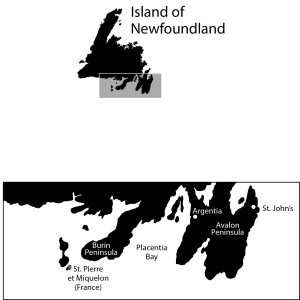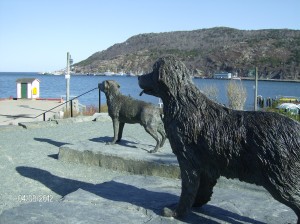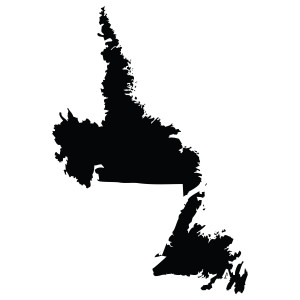by @AnnieDaylon

How’s she goin’, b‘ys?
I have just published a novel set on the island of Newfoundland–OF SEA AND SEED— and am often asked about the dialect of that part of Canada. The language is no doubt unique. A while back, I wrote this post about its source. If you have nare click nor clue about it, here (speaking strictly from me own neck of the woods which is Placentia), is the rights of it:
The dialect is owing to early settlers who hailed from Ireland, England and France. Groups arrived and settled together. Hemmed in by sea, no roads on land, they didn’t shift much.
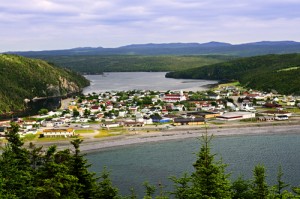
Placentia, NL, about 135 km (85 miles) west of St. John’s.
Over the years, dialect evolved, due to:
1) World War II: An influx of American military personnel slowed the lilt of the language and added words such as ‘dime’ and ‘boyfriend’;
2) Resettlement: As fishing declined, people shifted from outports to larger areas;
3) Emigration: People moved away; some came back, talking large.
4) Immigration: People brought in new accents; and
5) Technology: The world is online and satellite TV is all over da place, b’y. Everyone watches the same shows and movies and, subsequently, speaks similar language.
Despite all of the changes, despite the fact that I now live in British Columbia, I cherish opportunities to hear Newfoundland dialect; those occur thanks to CBC shows such as Land and Sea, The Rick Mercer Report, This Hour Has 22 Minutes, and Republic of Doyle. But nothing replaces the real thing, b’y, and every year or two, when I make the twelve-hour trip from Abbotsford, BC to St. John’s, NL, I look forward to the sound that is distinctly Newfoundland.
On such a trip couple of years back, I dashed from the St. John’s airport, filled my lungs with fresh air, hopped into the first available cab and leaned back, ears at the ready. When the driver opened his mouth, his accent fell out and my heart fell to me boots. He was Eastern European. What the heck? Holy Lord tunderin’! Was the dialect disappearing altogether?
I allow I was disappointed, and I had a like to forget about the whole thing. But I didn’t. I headed to the DownHome Shop and O’Brien’s Music Store. I listened to VOCM radio in the mornings. I heard smatterings of dialect but, by the last day of my ten-day trip, I resigned myself to the fact that the accent was dissipating. What was the world coming to at all?
A sense of loss pervaded as I rang up a taxi service to schedule my trip to the airport.

Eastern Canada’s island of Newfoundland, Province of Newfoundland and Labrador
“Where are ye at, me love?” asked the dispatcher.
With my heart fluttering to beat the band, I told him.
“Sure, me darlin’, ’tis not us you wants now at all.”
I was some flummoxed (and right delighted.) “Excuse me?”
“Well, it’s like this. We’re way too far across town. Call buddy over at City Wide. He’ll get you there, guaranteed.”
So I thanked him profusely and called ‘buddy’.
The next morning, the driver arrived early. When I complimented him on his promptness, he said, “Ducky, when I has to be some place, I shows up like a bullet!”
I smiled the rest of the way to the airport. I was still smiling when the jet pitched in British Columbia half a day later. What a wicked time I had! 🙂
My best to you and long may your big jib draw!

 Many posts ask readers which they like better… eBooks or real books. For me, it’s not about like or dislike; it’s about need. After years of typing, crocheting, playing piano, and marking papers, my fingers are calling the shots. And they let me know that it’s easier to touch a screen than to turn a page. I read for two or three hours daily and the right tool for the job and joy of reading is eBook. In fact, there are 334 books on my Kindle right now.
Many posts ask readers which they like better… eBooks or real books. For me, it’s not about like or dislike; it’s about need. After years of typing, crocheting, playing piano, and marking papers, my fingers are calling the shots. And they let me know that it’s easier to touch a screen than to turn a page. I read for two or three hours daily and the right tool for the job and joy of reading is eBook. In fact, there are 334 books on my Kindle right now.  feel of it firm, solid, and smooth.” I can relate to Kevin’s feeling for, when I first get my hands on my new paperback, there is no containing the happiness.
feel of it firm, solid, and smooth.” I can relate to Kevin’s feeling for, when I first get my hands on my new paperback, there is no containing the happiness. 

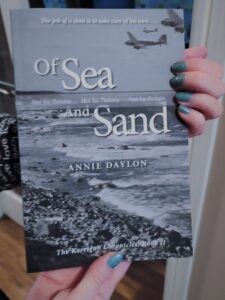
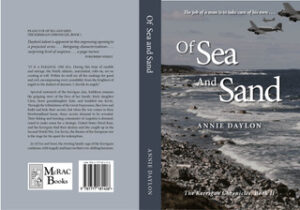
 Sheila’s Brush is an idiom used in Newfoundland and it refers to the last big storm of the winter season, a storm that occurs around St. Patrick’s Day. The term comes from an Irish legend which says that Sheila was the saint’s wife (or sister or mother) and that the snow is a result of her sweeping away the old season.
Sheila’s Brush is an idiom used in Newfoundland and it refers to the last big storm of the winter season, a storm that occurs around St. Patrick’s Day. The term comes from an Irish legend which says that Sheila was the saint’s wife (or sister or mother) and that the snow is a result of her sweeping away the old season.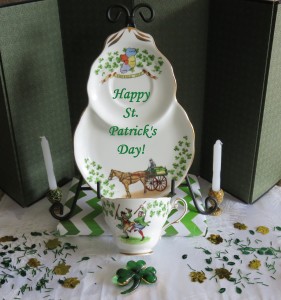


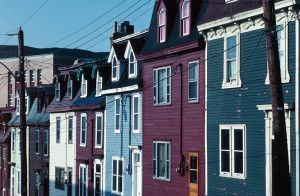 In downtown St. John’s, there are many vibrantly-colored Victorian row houses, fondly known as “Jellybean Row.” When people ask how to find Jellybean Row, they are often surprised to learn that no one street has that actual name. Jellybean Row is a nickname for all row houses in that area.
In downtown St. John’s, there are many vibrantly-colored Victorian row houses, fondly known as “Jellybean Row.” When people ask how to find Jellybean Row, they are often surprised to learn that no one street has that actual name. Jellybean Row is a nickname for all row houses in that area.  I have even heard moose referred to as Newfoundland speed bumps. 🙂 It surprised me to learn that moose are not native to Newfoundland. One pair was introduced in 1878 and thought not to have survived. Two more pairs were introduced in 1904. Currently, there are 100 000 moose there, assumed to be descendants of the 1904 pair.
I have even heard moose referred to as Newfoundland speed bumps. 🙂 It surprised me to learn that moose are not native to Newfoundland. One pair was introduced in 1878 and thought not to have survived. Two more pairs were introduced in 1904. Currently, there are 100 000 moose there, assumed to be descendants of the 1904 pair.